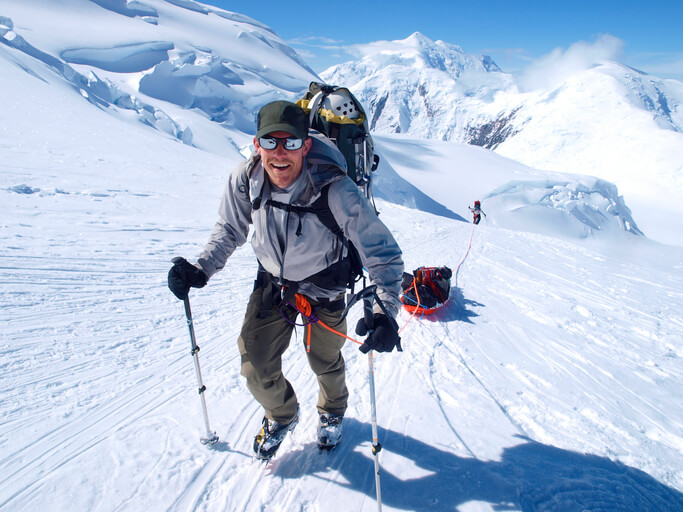For camping trips over snow, pulling your gear behind you instead of bearing it on your back can provide some advantages. You’ll be able to carry more, do more at camp, it lessens the strain on your body and it lets you travel over snow more easily.
Because of these advantages, winter campers often use a sled to pull their gear and equipment with a rope or pole harness.
TYPES OF SLEDS
Toboggans and pulks are two of the most commonly-used sleds when hiking or hauling cargo over snow. They’re simple and efficient tools for carrying supplies during camping trips.
Most are usually made of high-grade composite that’s durable and almost maintenance-free, but you may still be able to find sleds made of wood. Wooden sleds are incredibly strong and can haul logs for firewood (and can even be used as fuel or for tinder in a pinch), but they require careful upkeep to ensure good performance, so you’re better off getting a high-quality composite toboggan or pulk.
Ski sleds are also another type of sled. They have skis attached to the bottom, which elevate the main body of the sled above the snow. Because of their more complicated construction, they aren’t as commonly used as toboggans or pulks for camping.

Toboggans
Toboggans can come in varying sizes but will still follow a basic design. It’s usually flat, with the front curved upwards to let it plow through drifts.
You might think that a bigger and wider toboggan is better since it can hold more stuff, but this takes a toll on maneuverability as well as the person towing it. Wider toboggans can be harder to steer because their edges can catch, making them more cumbersome to handle in narrow passes.
Pulks
Pulks are usually smaller than toboggans but have one notable advantage: They’re easier to steer, whether in deep or shallow snow.
If you find yourself in a situation where you have to steer your sled around a tight corner, you might need a second person to help you lift your toboggan’s rear end. With a more compact pulk, you’ll be able to negotiate a turn by yourself with more ease.
Aside from better steering, pulks also have sidewalls that help keep your cargo inside.
HARNESSES
There are two types of harnesses use to pull sleds: rope and pole.
A rope harness is more flexible and can be attached in different configurations. The disadvantage of using ropes is the higher risk of being run over by the sled, especially when going downhill.
A pole or rigid harness overcomes this weakness. Poles also provide more control, especially when navigating through winding obstacles like trees. On the flip side they have the tendency to push into the user during descents, so the terrain you expect to encounter should be considered when making your choice.
With proper conditions, pulling a sled is a viable solution for transporting supplies to your campsite in the winter. It allows you to bring more equipment to make your trip more enjoyable (like a stove, heavy-duty winter tent, even a six-pack or two), all without breaking your back.


